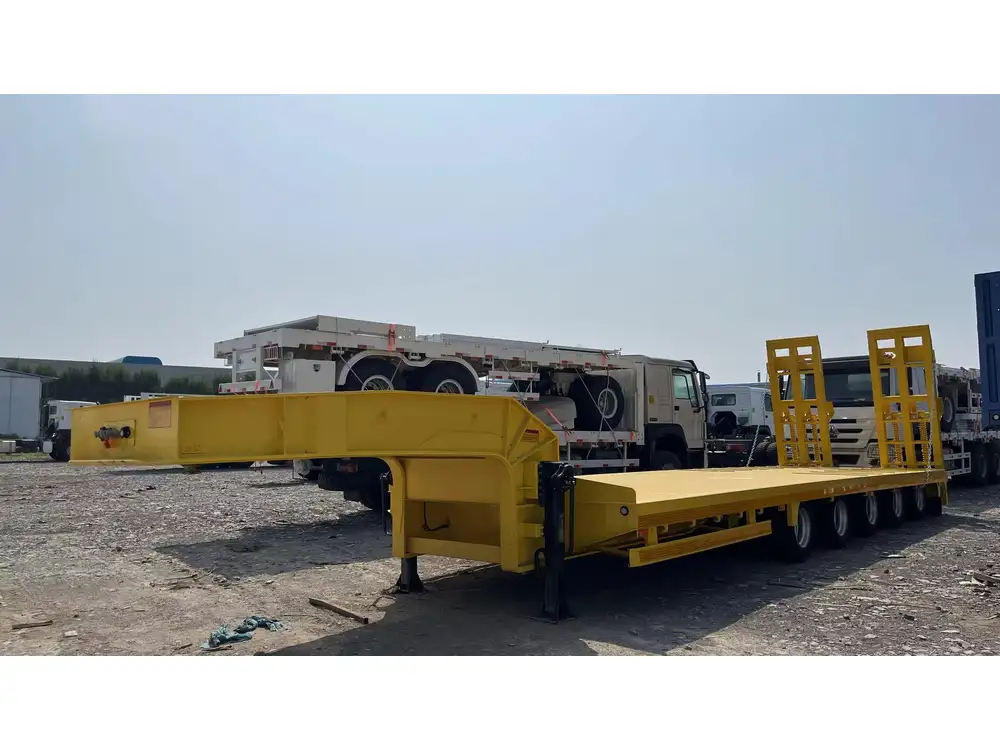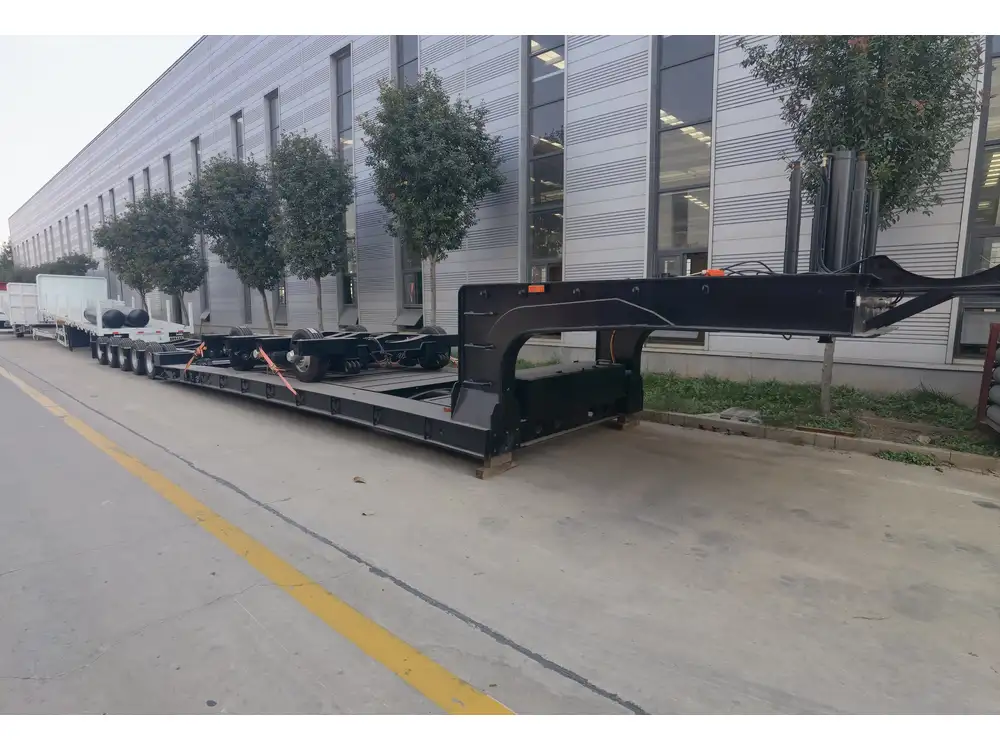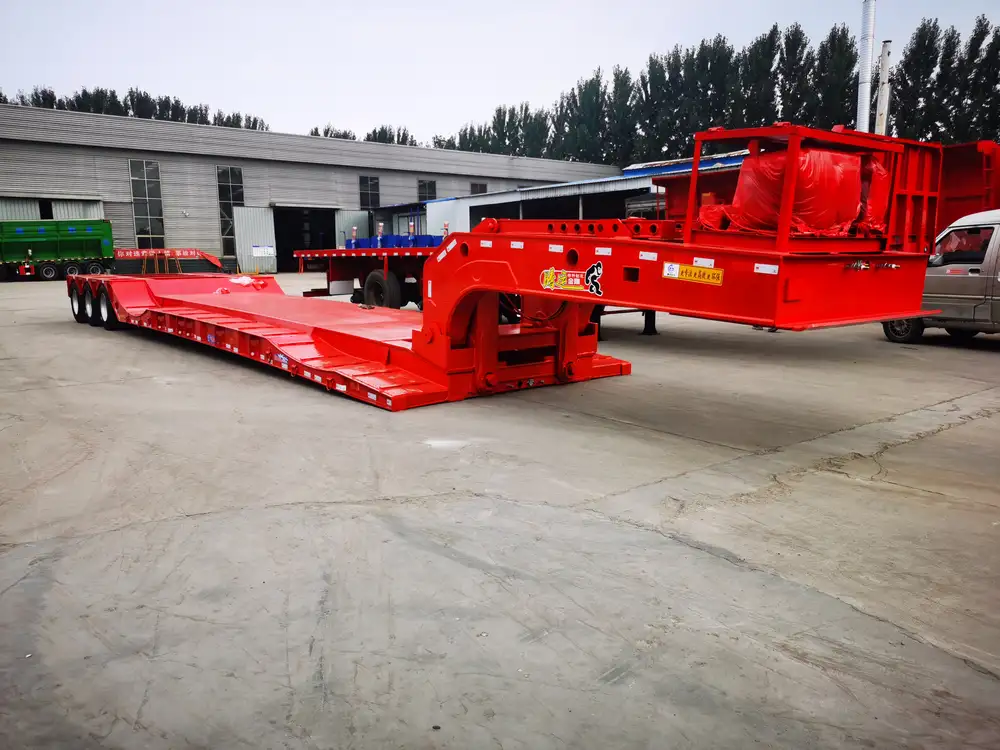Understanding the world of logistics and transportation is essential in today’s economy, particularly when it comes to semi-trailer trucks. These massive vehicles play a crucial role in moving goods across vast distances, but what exactly do we call them? In this article, we’ll delve deeply into the terminology surrounding semi tractor trailer trucks, their parts, and their functionality, ensuring clarity for industry veterans and novices alike.
The Basics: Defining the Semi Tractor Trailer Truck
What is a Semi Tractor Trailer Truck?
A semi tractor trailer truck, commonly referred to as an 18-wheeler or simply semi, is a combination of a tractor unit and one or more semi-trailers. The tractor unit, which contains the engine and the cab for the driver, is responsible for towing the trailer(s) that carry cargo.
Key Components:
| Component | Description |
|---|---|
| Tractor | The front part of the vehicle that houses the engine and driver’s cabin. |
| Trailer | The towed unit that carries the cargo. It can be a flatbed, enclosed, refrigerated, or tank trailer, depending on the load requirements. |
| Fifth Wheel | A coupling mechanism allowing the tractor to connect to the trailer. |

Common Terminology
When discussing semi-trailer trucks, various terms arise that can potentially cause confusion, particularly for those new to the industry. Here are several commonly used terms:
- Tractor Unit: The front part of the rig that provides the power.
- Semi-Trailer: A trailer without a front axle, relying on the tractor for support.
- Flatbed Trailer: A type of semi-trailer that has no sides or roof, suitable for loading heavy or oversized items.
- Dry Van Trailer: A closed, sided trailer used for general cargo; it protects the cargo from weather and theft.
The Variants: Types of Semi-Trailer Trucks
Semi-trailer trucks come in various designs, each optimized for specific types of cargo. Understanding the different types helps in selecting the right vehicle for transportation needs.
1. Flatbed Semi-Trailers
Applications: Ideal for transporting heavy and oversized items such as construction equipment, machinery, or lumber.
| Feature | Details |
|---|---|
| Loading Flexibility | Cargo can be loaded from the sides or top. |
| Safety Features | Requires securing cargo with straps or chains. |

2. Dry Van Semi-Trailers
Applications: Perfect for general freight, without the need for temperature control.
| Feature | Details |
|---|---|
| Climate Protection | Protects cargo from weather-related issues. |
| Security | Enclosed design reduces theft risk. |
3. Refrigerated Semi-Trailers (Reefers)
Applications: Necessary for transporting perishable goods such as food and pharmaceuticals.
| Feature | Details |
|---|---|
| Temperature Control | Equipped with cooling units to maintain required temperatures. |
| Insulation | Designed to keep contents at consistent temperatures. |
4. Tankers
Applications: Specifically designed for transporting liquids, chemicals, or gasses.
| Feature | Details |
|---|---|
| Design | Equipped with a cylindrical shape to handle pressurized contents. |
| Safety Standards | Must meet stringent regulations for hazardous materials. |

Understanding the Functionality and Operation of Semi-Trailer Trucks
How Semi-Tractor Trailers Operate
The operation of a semi tractor trailer truck involves multiple interworking systems.
- Engine Functionality: The tractor unit has a powerful diesel engine, typically producing between 400-600 horsepower, which can transport heavy loads efficiently over long distances.
- Transmission Type: Many trucks have either a manual or an automatic transmission, where shifts can be controlled by the driver or done automatically based on engine load and speed.
- Aerodynamics: Modern tractor units are designed with aerodynamics in mind, reducing drag and improving fuel efficiency.
Safety Features in Semi-Tractor Trailers
Safety is paramount in the transportation industry. Semi tractor trailer trucks are equipped with multiple features to ensure the security of the driver, the vehicle, and the cargo.
| Safety Feature | Description |
|---|---|
| Anti-lock Braking System | Prevents wheel lock-up during hard braking. |
| Electronic Stability Control | Helps maintain control during challenging driving conditions. |
| Impact-resistant Design | Construction materials designed to absorb shock during accidents. |

Regulatory Compliance and Safety Standards
Transporting goods via semi-trailer trucks is heavily regulated to maintain safety on the roads.
1. Federal Motor Carrier Safety Administration (FMCSA)
The FMCSA governs regulations including registration, operational standards, and vehicle maintenance.
2. Inspection Protocols
These trucks undergo regular inspections, including:
- Annual vehicle inspections
- Pre-trip and post-trip inspections
- Maintenance checks on critical systems
Common Inspection Points:
- Braking systems
- Tires and brakes condition
- Lighting and signaling devices

The Economics of Semi-Trailer Trucks
Understanding the economic impact of semi-trailer trucks is essential for recognizing their importance to the supply chain.
Transportation Costs
The cost of transporting cargo can be segmented into several categories:
- Fuel Costs: Significantly impacts overall operating expenses, influenced by fuel prices and efficiency.
- Driver Wages: Typically accounts for a substantial portion of operating costs.
- Maintenance and Repairs: Ongoing costs are required to keep trucks operational and compliant with safety regulations.
Revenue Generation
How do these vehicles generate income for companies?
- Freight Contracts: Long-term agreements with clients for transportation services.
- Dedicated Routes: Revenue from consistently servicing specific routes or clients.

Future Trends in Semi-Trailer Truck Technology
1. Autonomous Driving Technology
The trucking industry is on the brink of an autonomous driving revolution. Companies are investing heavily in self-driving technology, which promises to reduce the need for human drivers while increasing safety and efficiency.
2. Electric Trucks
The shift towards sustainable transportation has led to increased interest in electric semi trucks. These vehicles aim to reduce carbon emissions and fuel consumption.

3. Telematics and Fleet Management
Advanced telematics systems improve vehicle tracking, route optimization, and maintenance scheduling. This technology enhances operational efficiencies and reduces costs.
Conclusion: The Importance of Semi Truck Terminology in the Logistics Industry
Understanding the intricacies of semi tractor trailer trucks is paramount for anyone involved in logistics and transportation. By grasping the terminology, types, functionality, and regulatory aspects, individuals can make informed decisions in this complex environment. It is vital not just for professional drivers or logistic managers but for all stakeholders within the supply chain.
As we navigate through a growing landscape of technology and economic demands, staying informed about semi-trailer trucks and their evolving role will ensure success in this pivotal industry. Dive deeper into the subject, and explore how your business can benefit from leveraging the right knowledge about semi-trailer trucks.
With this comprehensive guide on semi tractor trailer trucks, readers are now equipped to engage with the subject matter confidently. From terminology and types to regulations and future trends, each aspect has been meticulously detailed to enhance understanding and drive user conversion effectively.



